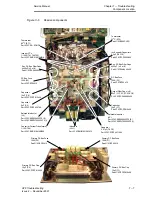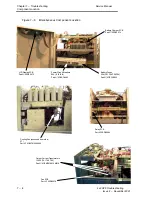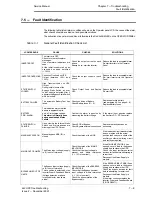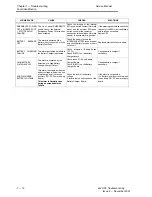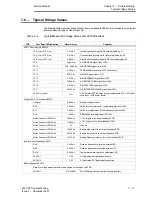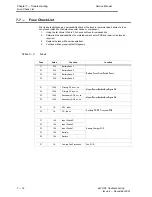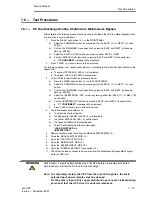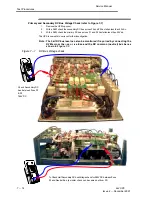
Service Manual
Chapter 6 - Maintenance
Battery Replacement
6 - 9
3x3 UPS Maintenance
Issue 2 - November 2001
6.3 - Battery Replacement
When deciding to replace a battery the following must be considered, and a decision taken, to mix old
or new batteries in the series string. Adding new batteries to a series string that has been in use for more
than 18 months, may induce problems due to the difference in capacity A new undercharged battery
placed into a fully charged old string, may fail to achieve full charge. The other batteries in the string may
limit the charge current, as the older batteries may only require a charge current of some milliamps, this
may then cause the new battery to sulphate. If a new battery is fully charged before inclusion, the probĆ
lem should not arise, however the effective life of the new battery is limited to that of the originals. The
new battery may also have a higher terminal float voltage.
Replacing more than one battery may cause redistribution of the float voltages, causing over and underĆ
charging. Attempts to equalize the string by using a top charge of 2.4 volt per cell, may cause temporary
overheating and the test should only be carried out with continual monitoring.
Applying a top charge, (equalization) to a battery of unknown quality can lead to rapid overheating and
the possible release of acid fumes. Equalization on a long series string has not shown to be of any beneĆ
fit, due to the ability of the batteries to absorb the excess charge over a large number of cells. However~
equalization of a single battery introduced into a string, is effective.
Since a site visits to replace a single battery is a costly process, a point will be reached where it is more
cost effective to replace an entire battery string than to properly asses the battery condition, and carry
out single or multiple replacements. This decision has the additional advantage of enhancing the reliaĆ
bility of the system, and has the benefit of a 12 month warranty on the new battery.
6.4 - UPS Storage
If the UPS is to be transported, or stored in a powered down condition for any length of time, the internal
battery may discharge below the minimum battery voltage.
To prevent this condition occurring, remove the battery fuses and retain with the unit.
For periods of storage in excess of 12 weeks, the batteries will exceed their shelf life.
This can be prevented by operating the UPS and allowing them to reĆcharge for 24 hours.
Battery recharging is done by:
1.
Connect the UPS to an input AC supply
2.
Fit the battery fuses.
3.
Power up the UPS and allow it to operate for 24 hours.























